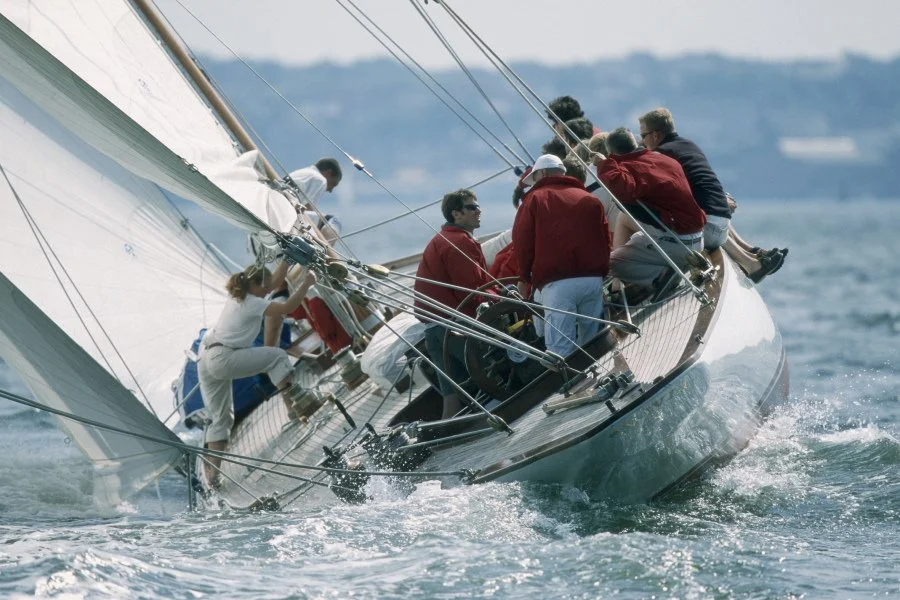
Cintra
A Fife-Built 12 Metre Reborn
CINTRA is one of the earliest 12 Metre yachts built to the International Metre Rule, launched in 1909 by master Scottish designer William Fife III. She was the second 12 Metre ever designed by Fife and played a key role in the golden age of racing on the Clyde and in Cowes, where she quickly proved competitive thanks to her advanced hull lines and constant performance improvements.
A Racing Career, Then Disappearance
Following a successful early racing life in Scotland and Southern England, CINTRA was refitted with a Bermudan rig after World War I and continued racing until the mid-20th century. Her last recorded competition was the 1956 Round the Island Race. After that, she vanished from the sailing scene.
Years later, she was discovered in poor condition—abandoned in a shed on England’s east coast. Major alterations had been made to convert her into a cruising boat: the deck layout was changed, a deckhouse added, her rig turned into a ketch, the keel shortened, and even her lead ballast replaced with concrete.
Rediscovered and Restored in Italy
In 1984, CINTRA caught the attention of the classic yacht scouts at Camper & Nicholsons, who reported her to Italian naval architects Giorgetti & Magrini. She was soon purchased by Alberto Rusconi, an Italian publisher and classic yacht enthusiast who also owned Tomahawk and Vim. He had her transported to La Bussola shipyard in Fiumicino for a full restoration.
The project team was committed to historical accuracy. They sourced original drawings, spar sketches, and construction plans from the Fife archives. Despite her state, the hull still showed Fife’s signature balance of form and function.
Restoration Highlights
Hull & Framing: Much of the Honduras mahogany hull was rebuilt. Acacia frames were replaced and alternated with galvanized iron, following Fife’s own structure for strength and lightness.
Deck: Rebuilt using marine plywood covered with Douglas fir planks—faithful to the original design.
Rig: The mast, boom, and gaff were reconstructed from hollow Douglas fir, since original silver spruce was no longer available. All fittings and blocks were handmade or forged, with many wrapped in English leather.
Interior: Minimalist additions included a nav station, galley, and head. The forward section remained open for sail handling.
Power: A small Perkins 20 HP engine was added to meet modern harbor requirements.
The restored sail plan included roughly 217 m² of upwind sail area and a 190 m² gennaker, crafted in ivory Dacron to mimic the look of original cotton sails.
Return to the Racecourse
CINTRA relaunched on August 20, 1991, just in time for the Porto Cervo Veteran Boat Rally. Despite little time for tuning or trials, she performed beautifully, returning to her rightful place on the racecourse—restored not just in body, but in purpose.
Legacy
CINTRA represents not only the technical brilliance of William Fife III, but also the resilience and historical value of early 12 Metre yachts. Her survival, recovery, and faithful restoration make her a standout example of the craftsmanship and competitive spirit that defined early 20th-century yachting.

